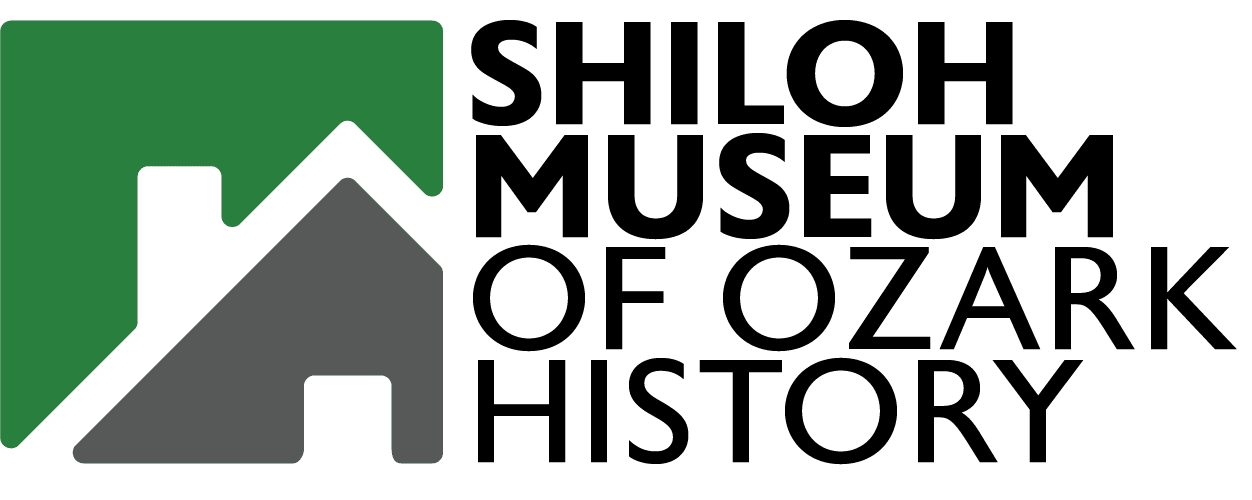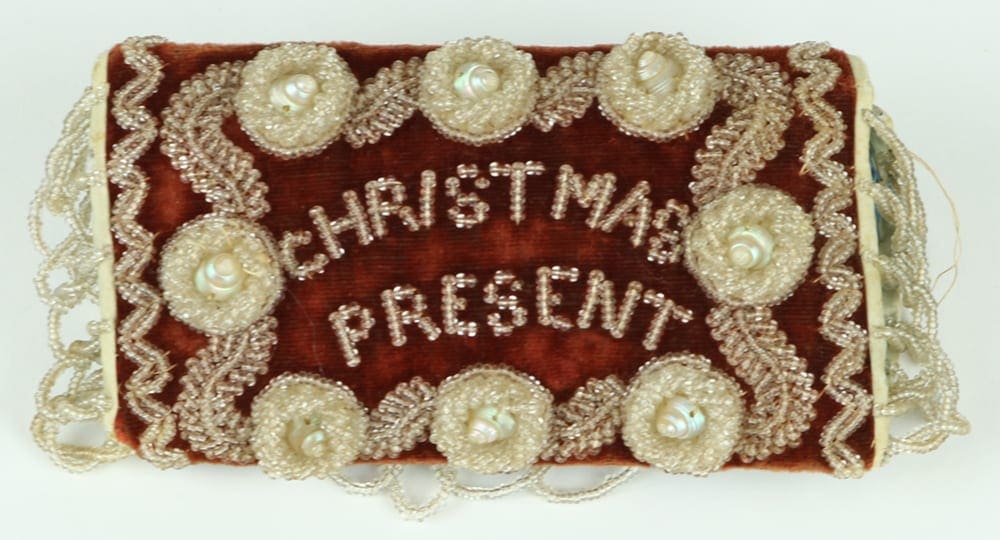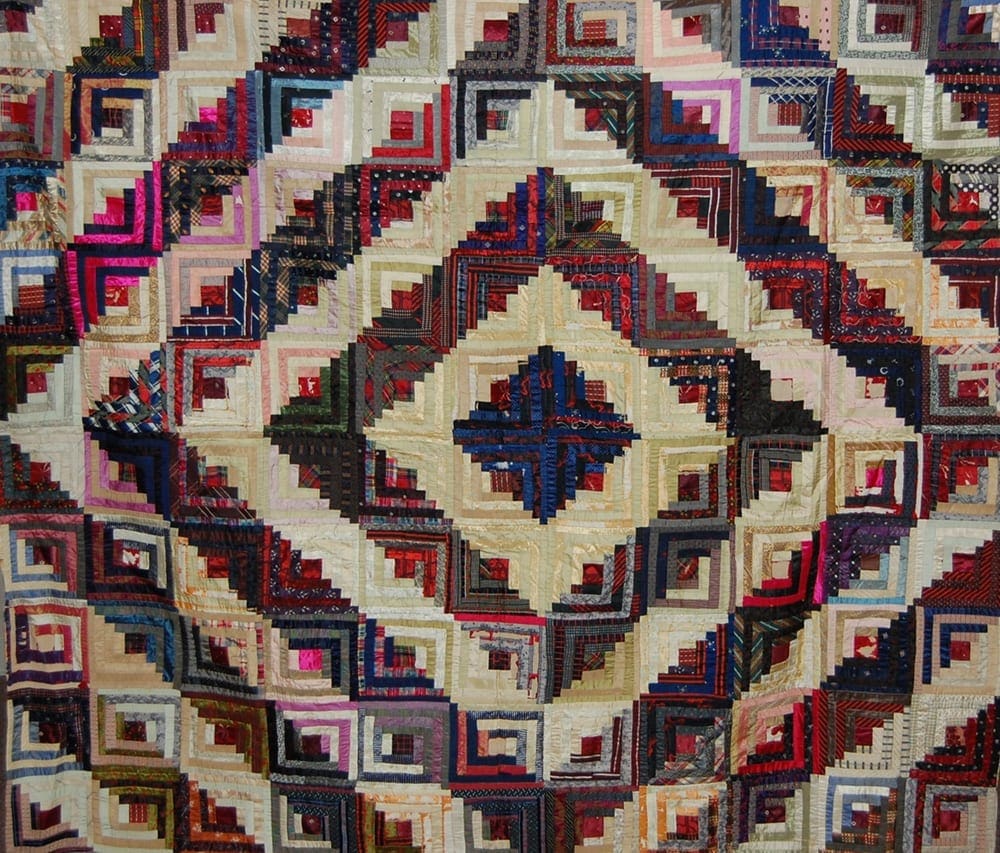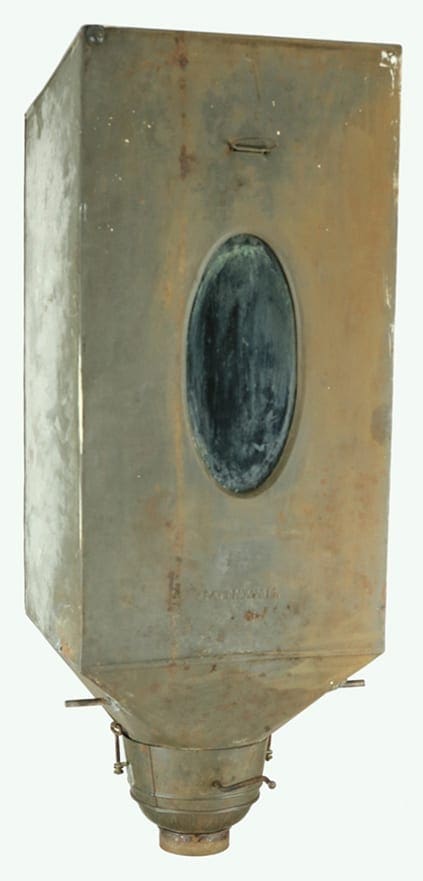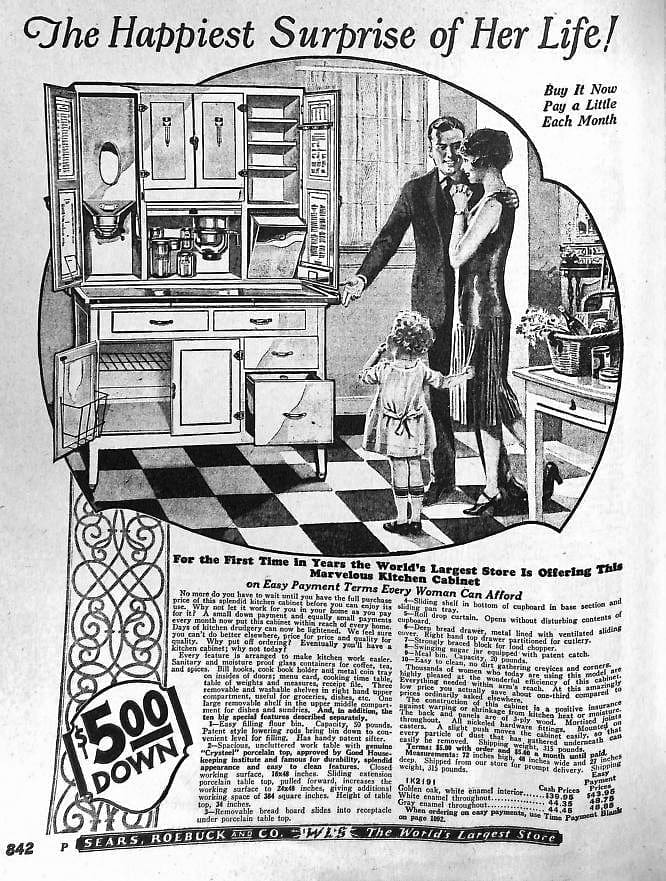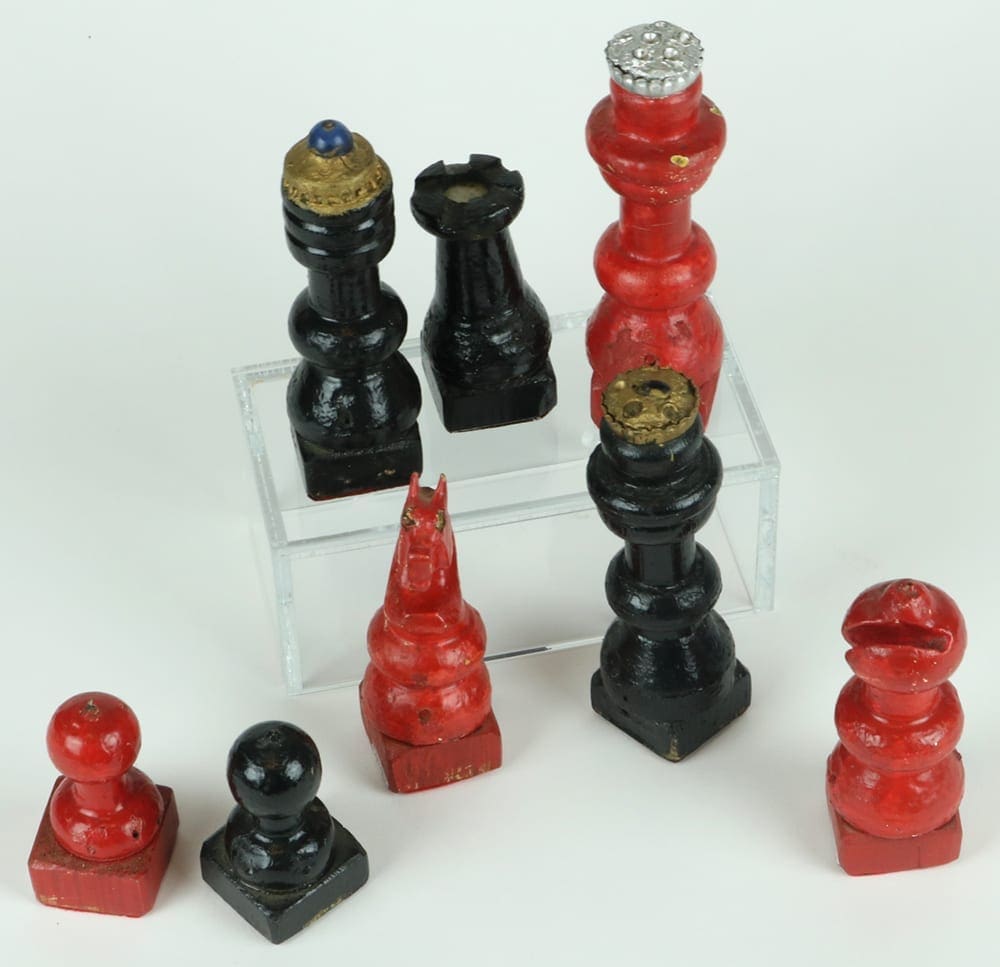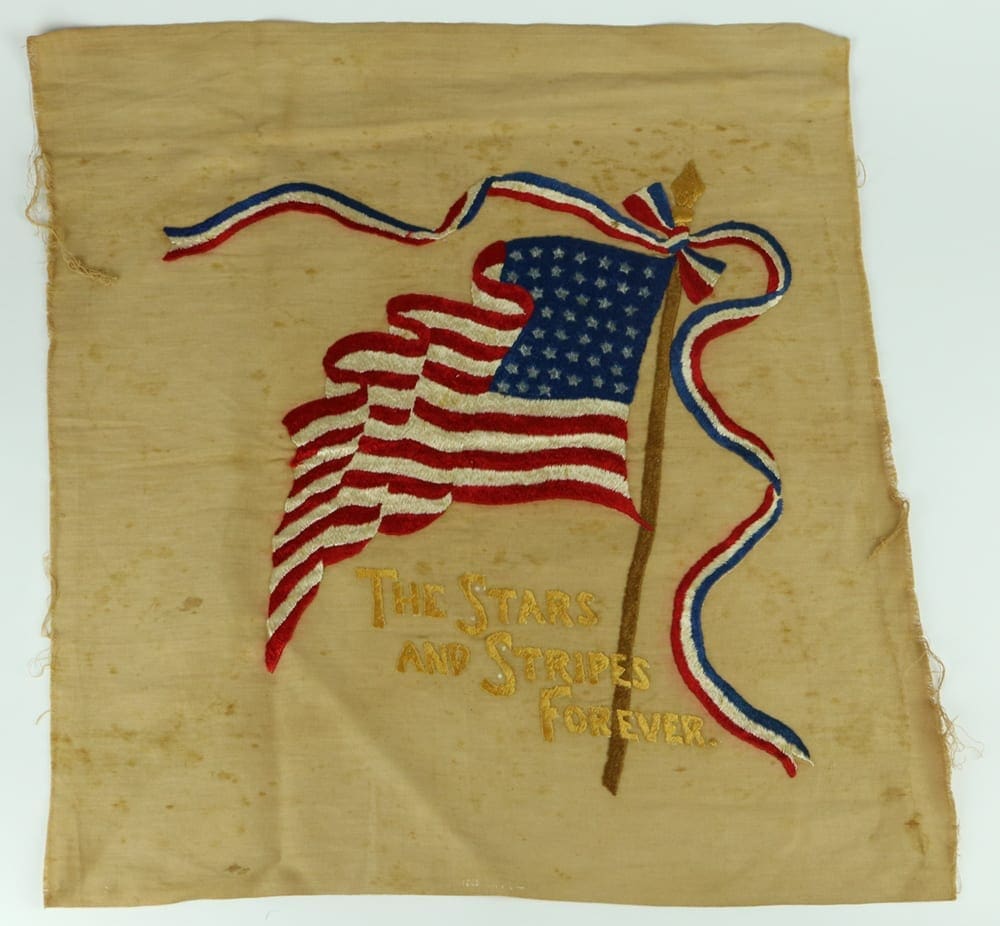Guy Howard made these chess pieces sometime in the mid-1900s in the workshop he had behind his home on Price Street in Springdale. The knight (horse-head) pieces were carved by Howard’s friend, Ralph C. Miller. The crowns on the king and queens are made of old bottle caps that have been filled with glue, set with beads or rhinestones, and painted.
William Guy Howard (1876-1965) moved to Northwest Arkansas from Nebraska as a young boy. He had a lifetime of public service in Springdale as city attorney during World War I, mayor during World War II, and municipal judge in the 1950s. To many local folks, Howard was known simply as “the Judge.” He was also a collector of prehistoric and Native American artifacts, which he displayed floor-to-ceiling in his home. In 1966 the Springdale City Council voted to purchase Howard’s massive collection of some 10,000 prehistoric and historic artifacts and 260 books and pamphlets on anthropology and archeology. This was the founding collection of the Shiloh Museum.
